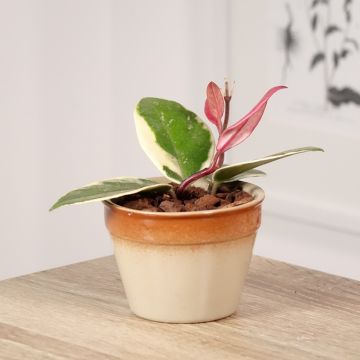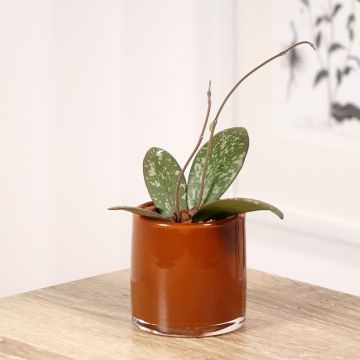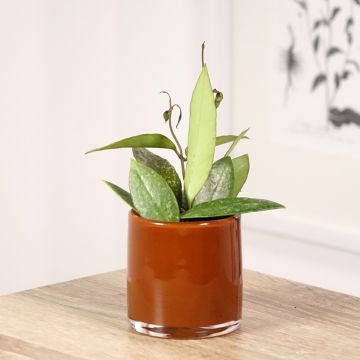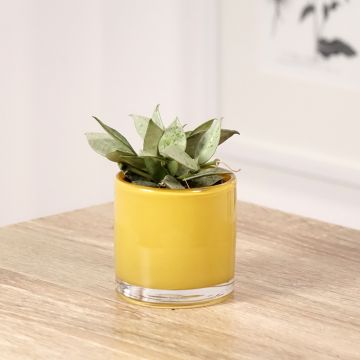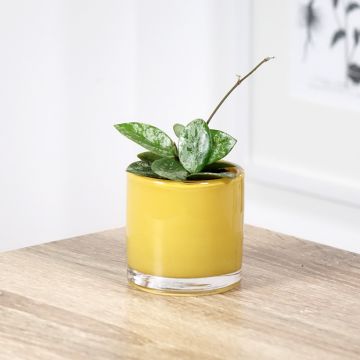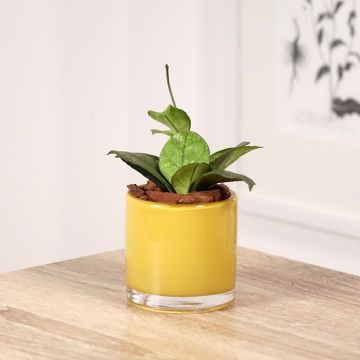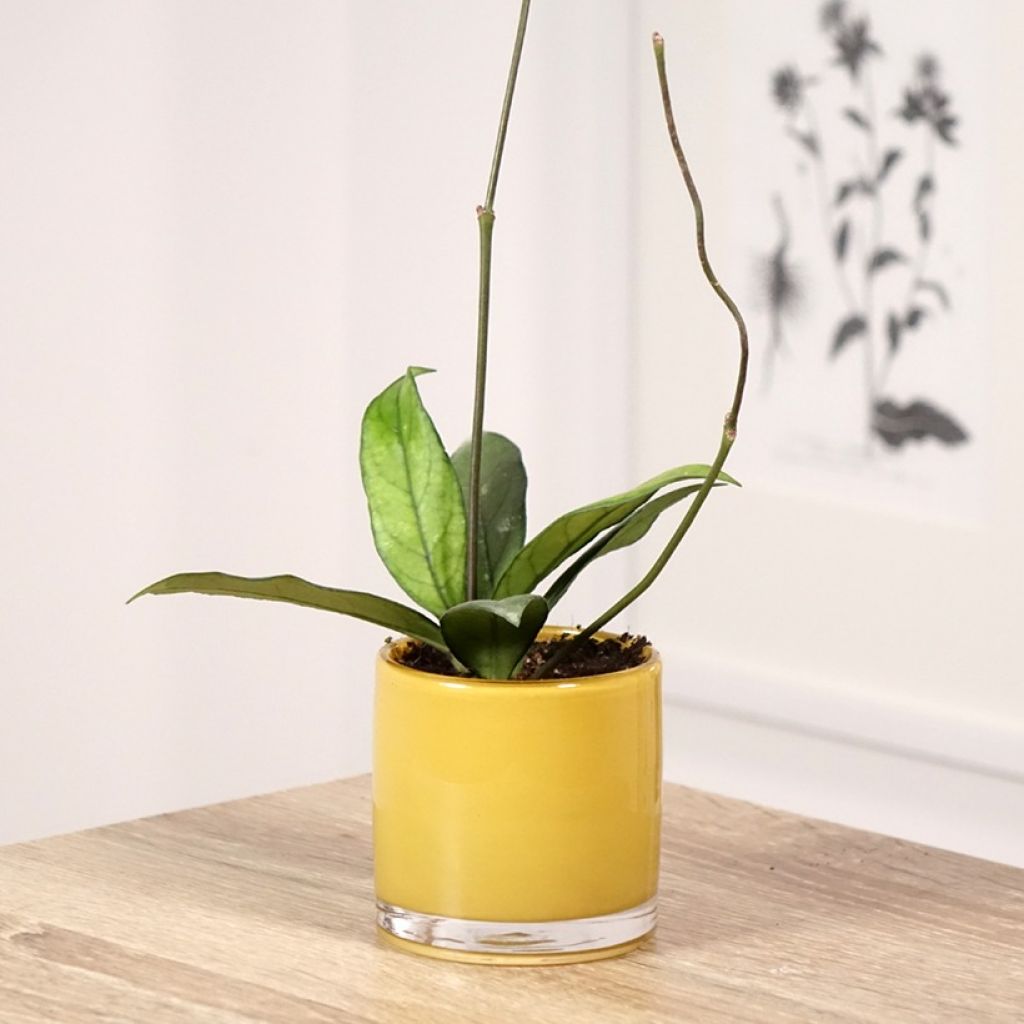

Hoya crassipetiolata - Wax plant
Hoya crassipetiolata - Wax plant
Hoya crassipetiolata
Wax plant
This item cannot be shipped to the selected country
Delivery charge from €6.90
More information
Schedule delivery date,
and select date in basket
This plant carries a 30 days recovery warranty
More information
We guarantee the quality of our plants for a full growing cycle, and will replace at our expense any plant that fails to recover under normal climatic and planting conditions.
From €7.90 for pickup delivery and €6.90 for home delivery
Express home delivery from €8.90.
Description
The Hoya crassipetiolata is a species native to Vietnam, rarely found in cultivation. It develops large, elongated, thick, slightly undulate lanceolate leaves. The medium green lamina is veined with dark green. This tropical houseplant creates an elegant cascade of lush lianas perfect for placing on a shelf or in a hanging basket. Its stunning and fragrant flowering gives it the alternative name 'Porcelain Flower'. Exquisitely beautiful, it rewards patient gardeners with umbels of flowers that resemble fine porcelain and last for several weeks.
The Hoya crassipetiolata is also known as the Wax Flower. It is a species native to Southeast Asia, particularly the lush forests of Vietnam, where it grows in warm and humid conditions. In these regions, this epiphytic plant climbs up other vegetation, using it as support to reach several metres in height. The Hoya crassipetiolata develops semi-succulent leaves; with its moderate growth under optimal conditions, its lianas can reach 1 m in length and 50 cm in width. Its spring or summer flowering, when grown indoors, appears once the plant reaches maturity, forming star-shaped flower umbels with a remarkable texture reminiscent of porcelain. Grouped in clusters of 15 to 20 or more, they are borne on long floral peduncles, creating clusters around 5-6 cm in diameter.
The genus Hoya belongs to the Apocynaceae family and comprises around 400 species, originating from the warm, humid regions of Southeast Asia, Australia, and Polynesia, where they thrive in tropical forests. Primarily shrubs or epiphytic lianas, they often anchor themselves to tree trunks and branches using aerial roots, allowing them to grow towards the light. This unique climbing habit has made them popular as ornamental houseplants, ideal for climbing supports or cascading from hanging baskets.
The Hoya crassipetiolata thrives in bright, indirect light—preferably 10 hours a day to encourage flowering—but can also tolerate some gentle direct sunlight in the morning or late afternoon. Use an epiphytic plant substrate such as an orchid mix, and allow it to dry out completely between waterings, except in summer or warm periods when you may water several times a week. This species prefers temperatures between 18°C and 30°C, with humidity levels of at least 50%, ideally up to 70%. You can train it to climb a support or, alternatively, grow it in a hanging basket, allowing its flexible stems to trail freely.
Report an error about the product description
Hoya crassipetiolata - Wax plant in pictures
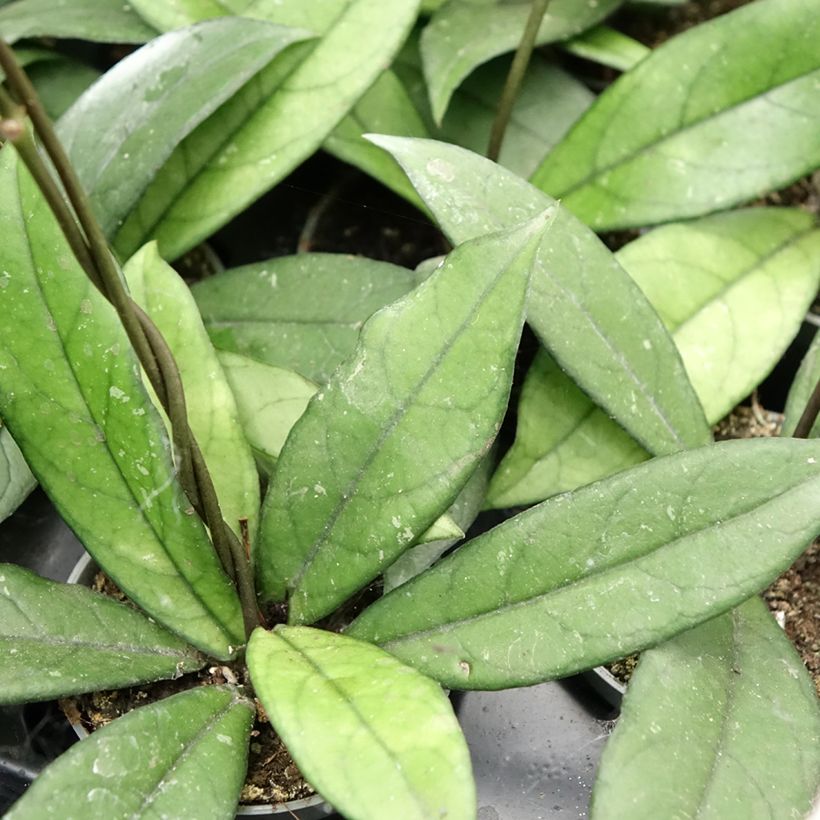

Foliage
Plant habit
Flowering
Botanical data
Hoya
crassipetiolata
Apocynaceae
Wax plant
Southeast Asia
Safety measures
Other Hoya - Wax plant
View all →Location
Location
Maintenance and care
Potting advice, substrates and fertilisers
Houseplant care
Disease and pest advice
Maintenance and care
This item has not been reviewed yet - be the first to leave a review about it.
Haven't found what you were looking for?
Hardiness is the lowest winter temperature a plant can endure without suffering serious damage or even dying. However, hardiness is affected by location (a sheltered area, such as a patio), protection (winter cover) and soil type (hardiness is improved by well-drained soil).

Photo Sharing Terms & Conditions
In order to encourage gardeners to interact and share their experiences, Promesse de fleurs offers various media enabling content to be uploaded onto its Site - in particular via the ‘Photo sharing’ module.
The User agrees to refrain from:
- Posting any content that is illegal, prejudicial, insulting, racist, inciteful to hatred, revisionist, contrary to public decency, that infringes on privacy or on the privacy rights of third parties, in particular the publicity rights of persons and goods, intellectual property rights, or the right to privacy.
- Submitting content on behalf of a third party;
- Impersonate the identity of a third party and/or publish any personal information about a third party;
In general, the User undertakes to refrain from any unethical behaviour.
All Content (in particular text, comments, files, images, photos, videos, creative works, etc.), which may be subject to property or intellectual property rights, image or other private rights, shall remain the property of the User, subject to the limited rights granted by the terms of the licence granted by Promesse de fleurs as stated below. Users are at liberty to publish or not to publish such Content on the Site, notably via the ‘Photo Sharing’ facility, and accept that this Content shall be made public and freely accessible, notably on the Internet.
Users further acknowledge, undertake to have ,and guarantee that they hold all necessary rights and permissions to publish such material on the Site, in particular with regard to the legislation in force pertaining to any privacy, property, intellectual property, image, or contractual rights, or rights of any other nature. By publishing such Content on the Site, Users acknowledge accepting full liability as publishers of the Content within the meaning of the law, and grant Promesse de fleurs, free of charge, an inclusive, worldwide licence for the said Content for the entire duration of its publication, including all reproduction, representation, up/downloading, displaying, performing, transmission, and storage rights.
Users also grant permission for their name to be linked to the Content and accept that this link may not always be made available.
By engaging in posting material, Users consent to their Content becoming automatically accessible on the Internet, in particular on other sites and/or blogs and/or web pages of the Promesse de fleurs site, including in particular social pages and the Promesse de fleurs catalogue.
Users may secure the removal of entrusted content free of charge by issuing a simple request via our contact form.
The flowering period indicated on our website applies to countries and regions located in USDA zone 8 (France, the United Kingdom, Ireland, the Netherlands, etc.)
It will vary according to where you live:
- In zones 9 to 10 (Italy, Spain, Greece, etc.), flowering will occur about 2 to 4 weeks earlier.
- In zones 6 to 7 (Germany, Poland, Slovenia, and lower mountainous regions), flowering will be delayed by 2 to 3 weeks.
- In zone 5 (Central Europe, Scandinavia), blooming will be delayed by 3 to 5 weeks.
In temperate climates, pruning of spring-flowering shrubs (forsythia, spireas, etc.) should be done just after flowering.
Pruning of summer-flowering shrubs (Indian Lilac, Perovskia, etc.) can be done in winter or spring.
In cold regions as well as with frost-sensitive plants, avoid pruning too early when severe frosts may still occur.
The planting period indicated on our website applies to countries and regions located in USDA zone 8 (France, United Kingdom, Ireland, Netherlands).
It will vary according to where you live:
- In Mediterranean zones (Marseille, Madrid, Milan, etc.), autumn and winter are the best planting periods.
- In continental zones (Strasbourg, Munich, Vienna, etc.), delay planting by 2 to 3 weeks in spring and bring it forward by 2 to 4 weeks in autumn.
- In mountainous regions (the Alps, Pyrenees, Carpathians, etc.), it is best to plant in late spring (May-June) or late summer (August-September).
The harvesting period indicated on our website applies to countries and regions in USDA zone 8 (France, England, Ireland, the Netherlands).
In colder areas (Scandinavia, Poland, Austria...) fruit and vegetable harvests are likely to be delayed by 3-4 weeks.
In warmer areas (Italy, Spain, Greece, etc.), harvesting will probably take place earlier, depending on weather conditions.
The sowing periods indicated on our website apply to countries and regions within USDA Zone 8 (France, UK, Ireland, Netherlands).
In colder areas (Scandinavia, Poland, Austria...), delay any outdoor sowing by 3-4 weeks, or sow under glass.
In warmer climes (Italy, Spain, Greece, etc.), bring outdoor sowing forward by a few weeks.

































